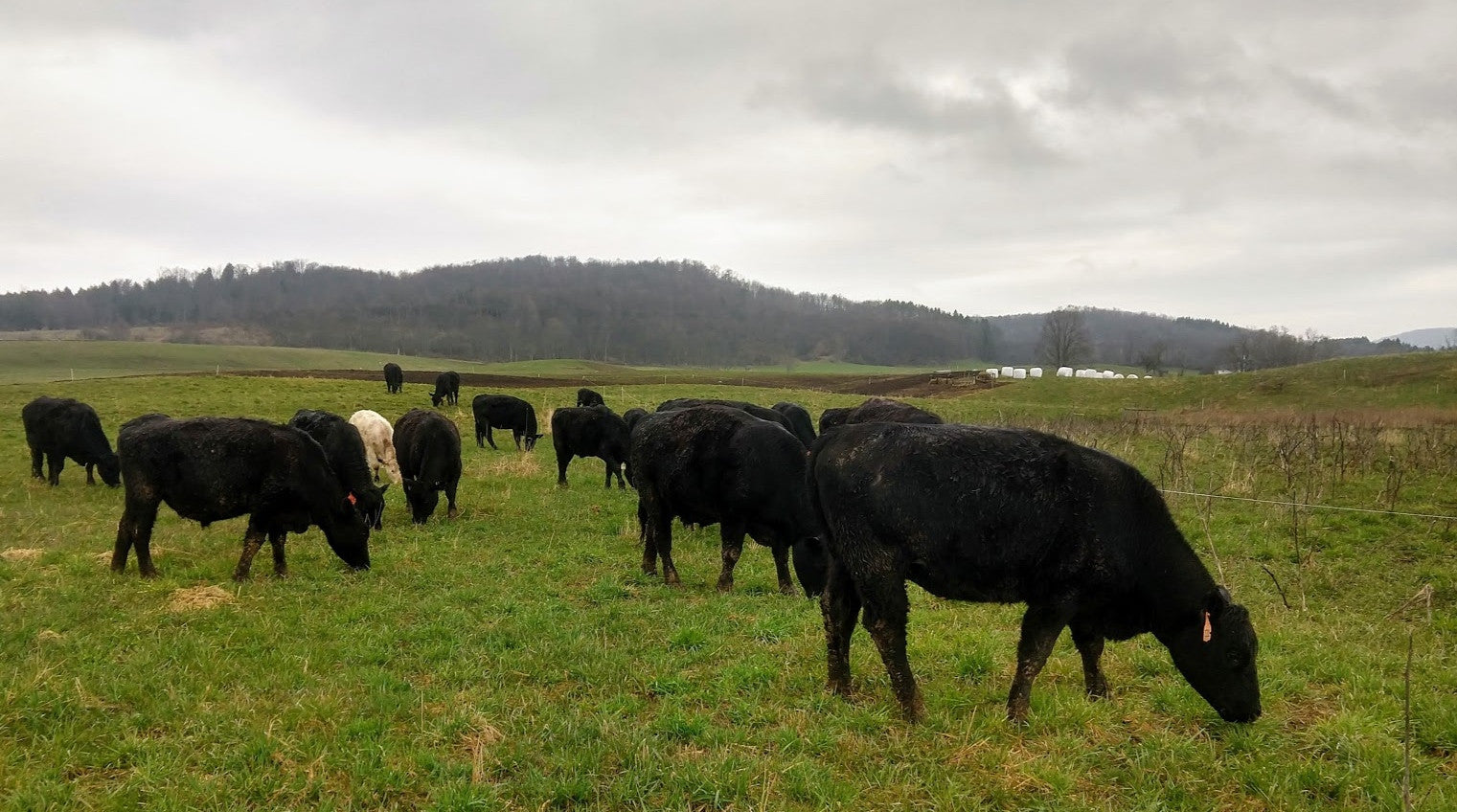By Edmund Brown
With snow flakes falling as I write this sentence, it sure doesn't feel like Spring at the moment. But yesterday I got slightly sun-pinked when I took my shirt off while digging out a waterline hydrant. So I do trust warmth is on its way.
I've started letting the cattle have at small sections of pasture for the last three days. It's "too early" to officially begin the grazing season in earnest. With the warmth we had at the beginning of April I hoped to start really grazing by now, but alas, Mother Nature had other plans and I now am aiming for May 1st as the first day of full grazing. The small section of short grass I parceled out is too short and lush to promote robust health if it constituted the entire day's intake for the herd. Early spring growth is too rich in protein and too low in fiber to be ideal feed. Ruminants' digestive tracts need a good dose of fiber every day to literally give them something to (re)chew on. Without enough fiber their manure gets loose and their digestion gets upset.
In the background above the cow to the right of the image there are white "marshmallows" of hay. That hay is from a late 1st cutting that has lower than ideal protein and too much fiber. Feed with too much fiber and inadequate protein limits young stock (like we run) such that they can't reach their full growth potential.
Perhaps you can now see where I'm going with this... by giving access to a small stretch of early grass (high protein/low fiber) and free access to late first cut hay (low protein/high fiber) I provide the requisite building blocks for a balanced feed ration that will come close to meeting the herd's nutritional needs for good growth. I trust the cattle to select what they need when they need it; I just have to provide the opportunity for them to choose according to their appetites. Judging by the cow plops (seriously, they're a reliable indicator!) the cows and I are getting it about right. A secondary, but also very important, reason to allow limited grazing while still on hay is to give the cattle time to adjust the microbes in their guts. Digesting fiber-rich dry hay requires a different digestive arrangement with the microbiome than digesting lush, fresh grasses and clovers. Jumping from one feed straight into another in a single day can cause rumen upset and discomfort. It's much better to ease the transition over two weeks than to force it quickly in a day or two.
The biggest downside to this plan is the certain yield losses on this part of the pasture for the rest of 2020. Each subsequent grazing pass on this part of our ground for the remainder of this year will have a slightly reduced yield compared to what's possible. If I let the grasses build up more root reserves before taking a first bite, they'd grow bit during each rest period between grazings. But for the cattle we have, the hay we have, and the pastures we have I think the course I'm plotting is the correct one at the moment. With other classes of livestock, other hay, or other stocking rates I might very well make a different decision about when to allow some limited grazing to begin. These types of multivariate choices that demand the weighing of needs are a big part of what keeps farming interesting day after day after day.

